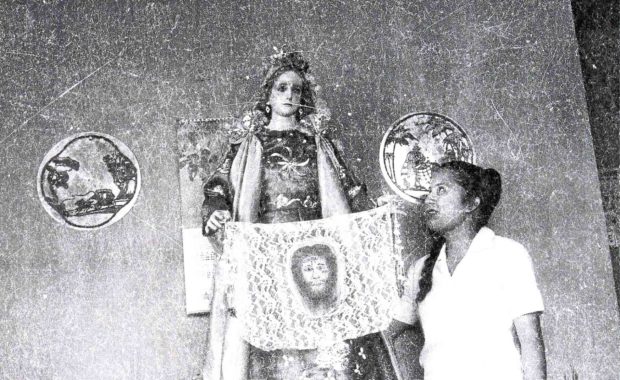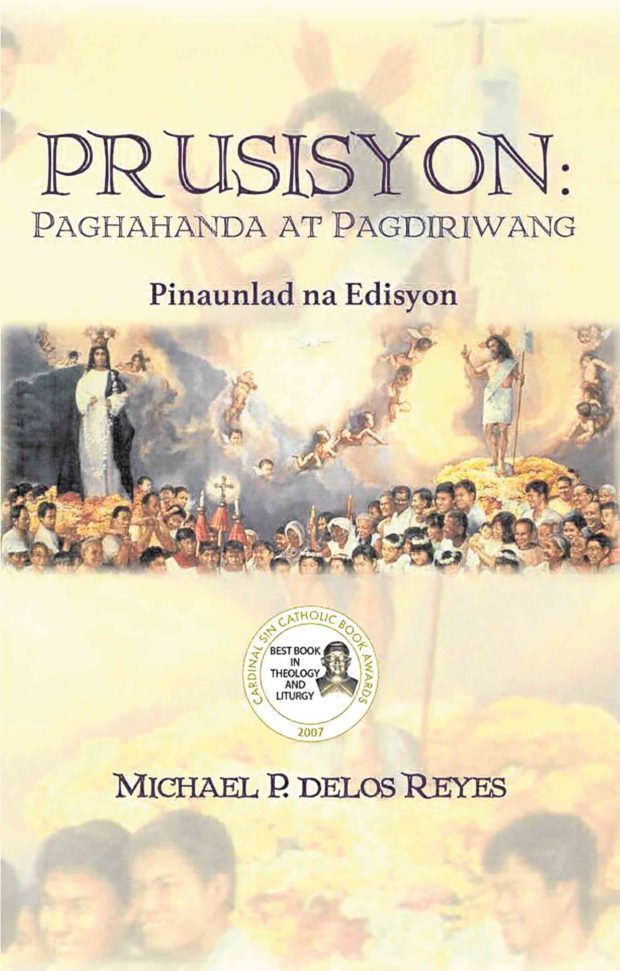
DEVOTION The mother of author Michael delos Reyes has been devoted to this image of Sta. Veronica, which she takes care in Rizal province. —CONTRIBUTED PHOTOS
CITY OF SAN FERNANDO — Discrepancies have widened in the manner Good Friday processions have been staged all over the country, apparently due to the absence of rules from the Roman Catholic Church.
The 30-year-old Nativity of our Lord Parish at Cubao in Quezon City, for instance, sticks to the most basic.
For the occasion that is meant to remember the burial of Jesus Christ, the parish’s procession focuses on two life-size images: the Sto. Entierro (Dead Christ) and the Mater Dolorosa (Sorrowful Mother).
Elaborate preparations
In Bulacan province, devotees in Baliuag town have produced 118 statues and scenes, according to the last count of Msgr. Andy Valera, head of the St. Augustine Parish founded in 1732.
On sheer volume and elaborate preparations alone, Baliuag’s Good Friday rite has been likened to the procession held in Seville province in Spain, Valera said.
Michael delos Reyes, author of the book “Prusisyon: Paghahanda at Pagdiriwang,” said the scale and solemnity differ because only a few dioceses have guidelines on Holy Week processions and these are usually made by their liturgical commissions.
“There are also parishes that have come out with their own rules, based on the diocesan guidelines or on my book ‘Prusisyon.’
“The diocesan and parish guidelines may vary, in the absence of a common guidelines for the church in the Philippines. This is where hopefully the book will be helpful,” Delos Reyes told the Inquirer.
He wrote the book due to family tradition (his maternal grandparents in Cainta, Rizal province, have custody of the heirloom image of Sta. Veronica) and because of parish concerns.
Among these issues was the order and which images should be part of the Good Friday procession.

The book, “Prusisyon,” is hailed by Lingayen-Dagupan Archbishop Socrates Villegas as the first of its kind on the subject of Holy Week processions in the Philippines.
Conflict
Delos Reyes also wanted to address conflicts between the parish priest and the owners of the images.
Claretian Publications published his book in 2006 that won the best book award in theology and liturgy in the 2007 Cardinal Sin Catholic Book Awards.
The Good Friday procession imitates a funeral rite, Delos Reyes said, by featuring the image of a Dead Christ, as well as dressing disciples, saints and the Sorrowful Mother, in mourning attire. It ends with the “pahalik” (kissing of the Dead Christ).
Over time, a number of Good Friday processions have become bigger, as more images are added between the Dead Christ and the Sorrowful Mother.
Delos Reyes said the additional images were introduced because many people had become enthusiastic about expanding the tableau in Holy Week rites in their respective parishes.
Priority
“Priority needs to be given to images and the tableau depicting the scenes in the passion and death of Jesus. Once completed, inclusion of scenes from the public ministry of Jesus—as had been done in some places—should be discouraged since the act unnecessarily expands the focus of Holy Week processions which is the passion, death and resurrection of Jesus,” he said.
Holy Week processions are based on, among other things, the Biblical accounts of the passion, death and resurrection of Jesus.
‘Via Lucis’
As for the images of saints, priority should be given to those who were mentioned in the passion narratives in the Gospel or the Via Crucis (Way of the Cross), Delos Reyes said.
He said the duplication of images and the tableau should be avoided so as not to “weaken the symbolic power of images.”
He proposed a Via Lucis (Way of Light), consisting of 14 stations and meditations on Biblical events from the Resurrection of Jesus to the Descent of the Holy Spirit.
Valera said the Good Friday procession in Baliuag has been devout, even if 118 images and the tableau make up the entire rite.
Because the procession is mainly for catechism (education regarding faith), a local radio station is tapped to air running commentaries, prayers and songs during the event.
“It is one of the most solemn Good Friday processions in the Philippines,” Valera said. The only requirement handed down by Malolos Bishop Jose Oliveros was to make the occasion prayerful, he said.

